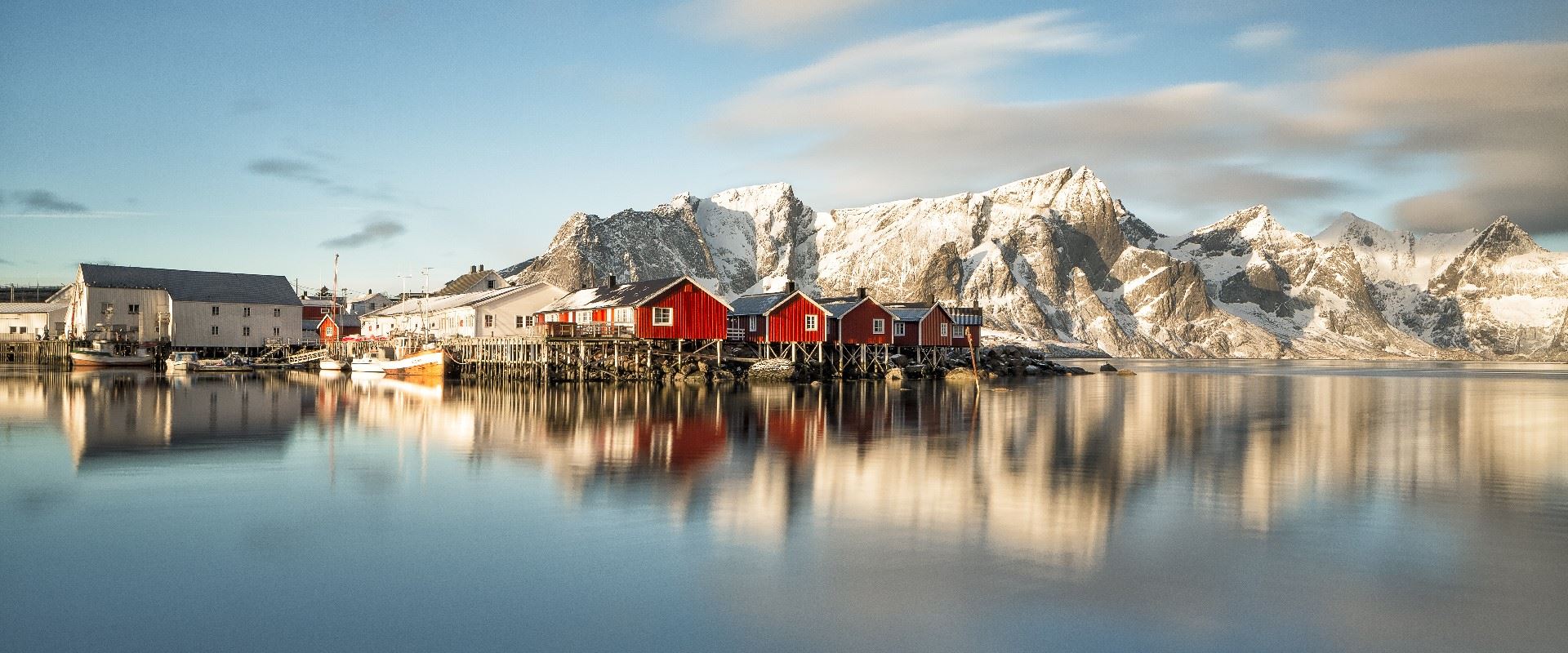Encompassing the principal islands of Hinnøya, Austvågøy, Gimsøya, Vestvågøy, Flakstadøya, Moskenesøya, Væroy and Røst, the archipelago of the Lofoten is a nature lover’s paradise. A land of jagged mountain peaks, sheltered bays, a coastline dotted with picture-postcard wooden houses (the fishing villages of Henningsvær and Reine are among the prettiest) and large areas of virgin territory with beaches and fjords in the north and sea bird colonies in the south. Hiking, cycling, fishing and sea-kayaking are all available.
In 2007, National Geographic magazine commissioned 522 experts to study the impacts of tourism on islands worldwide. The islands of Lofoten were considered the third best-preserved destination and a historic and geological masterpiece. This study alone should give you an idea of why the archipelago of the Lofoten is worth visiting.
The 166km of road known as the E10 runs from Fiskebol to the southernmost village of Å has been designated a National Tourist Route. The route takes you on a drive through magnificent scenery and a vibrant coastal culture. The landscape is filled with contrasts ranging from the dramatic expanse of the ocean to craggy alpine peaks, glistening white sandy beaches, fishing hamlets in sheltered ports and verdant agricultural communities.
Start your exploration of the islands in the bustling harbour town of Svolvaer, Norway’s largest fishing and fish farming community, before driving along the southern coastline of Austvågøya to the pretty fishing village of Henningsvaer. Attracting artists with its colourful Rorbu, narrow waterways and active fishing community, it is in Henningsvaer that you will find the Lofoten House Gallery as well as a number of glass and ceramic workshops and the Ocean Sounds Research Centre where you can learn about Lofoten’s nature and marine life.
Continue south to Stamsund, on the island of Vestvågøya, one of the most important fishing villages in western Lofoten and a port of call for Hurtigruten. Fishing has always been the foundation of life on the Lofoten and from February to May visitors to the region will see tonnes of fish hung out to dry on the stockfish racks. The island of Vestvågøya is home to the Lofotr Viking Museum a full-size reconstruction of a Chieftains longhouse which holds an exhibition of original artefacts. The quality of archaeological finds on display at the museum are extraordinary and the interactive museum warrants at least a half day visitor. During the summer months picnic spots and the opportunity to sail in a replica Viking ship makes it an ideal day trip from Svolvaer, Henningsvaer, Nusfjord and Reine.
The road south, across the islands of Flakstadøya and Mosekenesøya ends at the village of Å (the distance from Svolvaer to Å is 134km, from Henningsvaer to Å is 127km). Flakstadøya is home to Nusfjord, one of Norway’s oldest and best preserved fishing villages. Moskenes is renowned for some of the most fantastic walking trails in the Lofoten, its wild mountainous landscape and for its string of traditional fishing villages – Hamnøy, Reine and Moskenes to name but a few.
From the end of May to mid-July the natural phenomenon of the Midnight Sun is visible from the Lofoten. For the best experience, travel to the northern coastline of the archipelago to villages such as Fredvang, Ramberg, Eggum, Unstad, Kvalnes and Laukvik.
The islands are also home to a high density of bird species including White Tailed Eagles, Razorbill, Guillemot, Cormorant, Kittiwake and the characteristic and colourful Puffin, as well as attracting many migrating birds in spring and autumn. The island of Røst, in particular, is famed for its bird life with the largest number of nesting birds in Norway (c.2.5 million adult birds). Whether an ornithologist or a novice, you will be enthralled by the variety of species on display.













